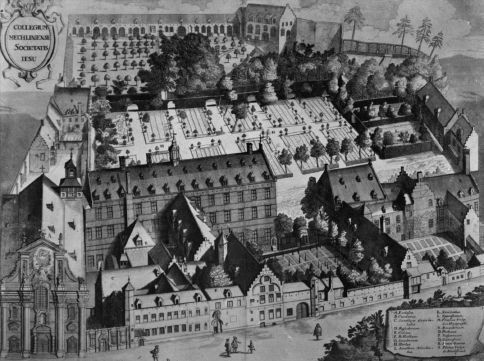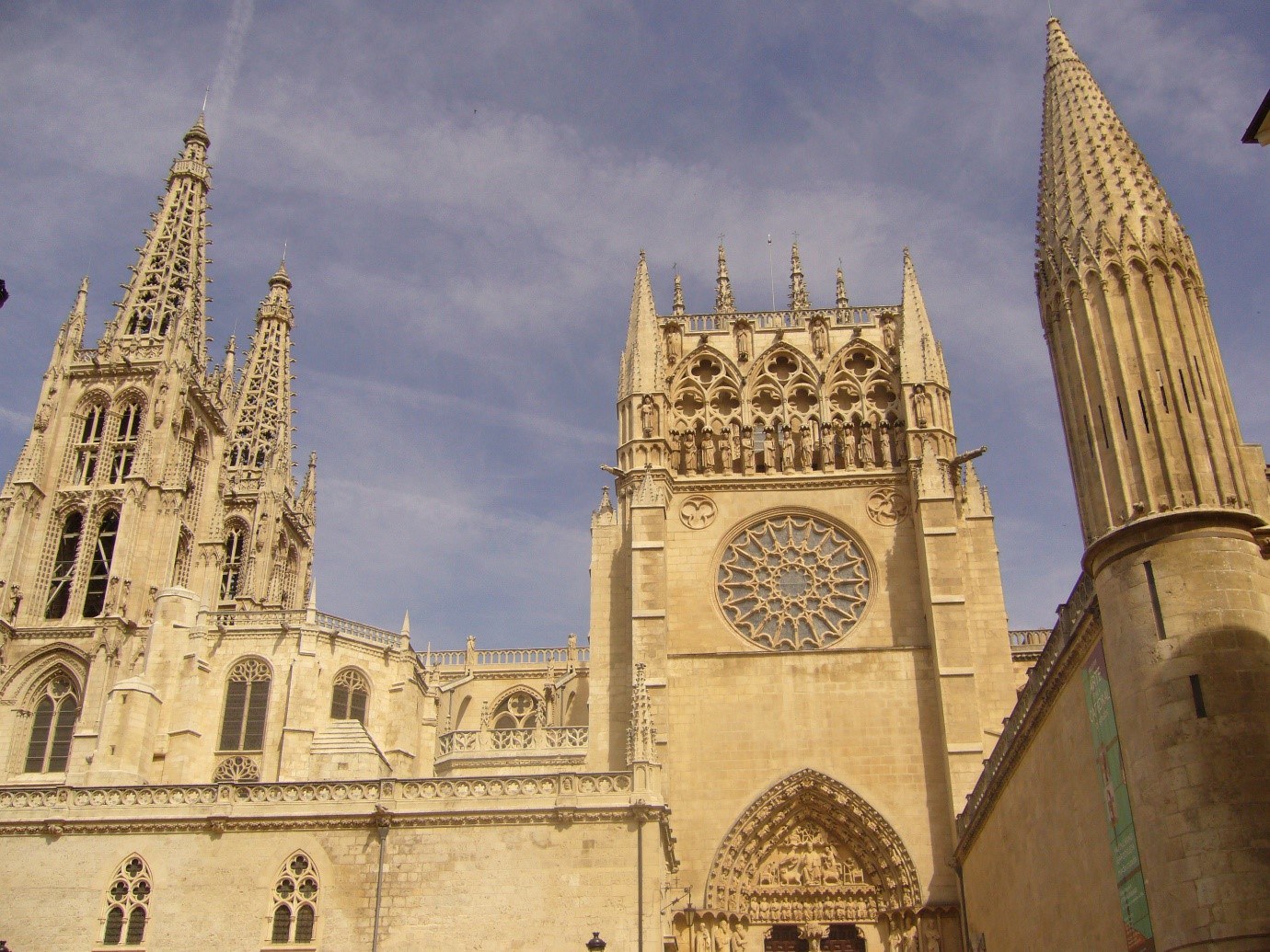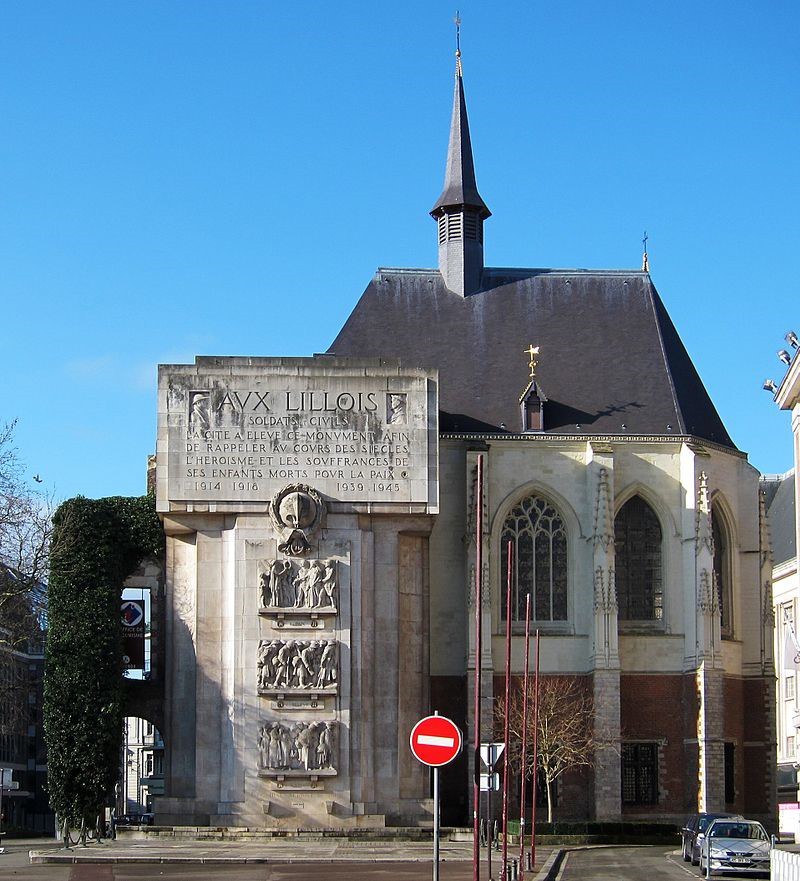Marguerite of Austria: The Low Countries and Beyond
Marguerite lived in four countries, an unusual breadth of experience in the sixteenth century. Once she had settled back in the Low Countries, she travelled within them, but seldom went further afield, until she went to her final resting place in Savoy, beside her beloved second husband.
The numbers against the places correspond to the map here and at the end of this article.
The map gives the names of the provinces as they were during Marguerite’s life-time. Many have changed – for example, Lille and Cambrai are now in France, and Aachen is in Germany. This article uses the term the Low Countries, to refer to the duchies, counties and other provinces that were held by Marguerite’s maternal ancestors and her Hapsburg nephew, and the modern term, The Netherlands, to refer to the polity that was created following the Eighty Years War, when Hapsburg rule was thrown off. Geographically, they overlapped, but not wholly.
Marguerite was born in Brussels, the principle town in the duchy of Brabant, a territory that owed allegiance to the empire. She was baptised in the city’s main church, dedicated to SS Michael and Gudule (1). Marguerite’s godmother was her step-grandmother, Margaret of York, the dowager-duchess of Duke Charles the Bold of Burgundy.
The original foundation probably dates from the ninth century, whilst the current building has its roots in the eleventh century when the Counts of Leuven updated it and translated to it the remains of St Gudula. The church was enhanced in the thirteenth century by Duke Henri II of Brabant (Marguerite’s 8 x great-grandfather), in the style known as Brabantine Gothic. Today, the church is a cathedral, sharing the status of chief cathedral in the province of Brabant, with that of St Rumbold in Mechelen.
Marguerite’s mother, Mary of Burgundy, died when Marguerite was only two. In order to preserve as much as he could of his wife’s inheritance, Marguerite’s father, Maximilian, King of the Romans, agreed a treaty with the predatory Louis XI of France, who sought to reclaim various Burgundian territories. As part of a peace-treaty, signed at Arras, Marguerite was promised to Louis’ son, the Dauphin Charles, and at the age of three, Marguerite travelled to France to be brought up there as the future queen. Her dowry was to be the disputed Franche-Comté (County of Burgundy) and the county of Artois.
Marguerite spent most of her childhood at the delightful Chateau of Amboise, described more fully in the article on the life of Anne of Brittany who became Queen of France in Marguerite’s place, when Charles repudiated his betrothal to Marguerite.
The humiliated eleven-year-old Marguerite returned to the Low Countries, where she took up residence with Margaret of York, in the town of Mechelen (3).
Mechelen, (or Malines), was one of the largest and most prosperous towns in Brabant – rivalling nearby Brussels. The two towns had a long-standing dispute over customs dues on the river passage between them. The town had been granted to the dowager-duchess, Margaret of York, as part of her dower and she spent most of her widowhood there – perhaps appreciating its unusual cleanliness. Following a fire in 1342, the corporation had ensured that the rebuilt town was fully paved.
Since there was no ducal palace in the city, in 1477 Margaret purchased the hôtel of the bishop of Cambrai, and seven adjoining properties. She transformed the properties into a suitable residence for a dowager-duchess. The property was of red-brick, decorated with white stripes, and having a hexagonal tower in one corner, as well as a balcony from which the ducal family could see and be seen by the townspeople.
In July 1485, Margaret sold her palace to the city of Mechelen, which purchased it for 12,000 crowns, and gave it to Maximilian and the young duke, Philip. Margaret continued to live there, with Philip in her care, and it was here that Marguerite took up residence in 1493, alongside the dowager.

Later, Marguerite chose Mechelen as her own base from which to administer the Low Countries. She found Margaret’s original house too small, and instead developed a whole new complex on the opposite side of the road (the Keizerstraat). See more on the palace here.
Marguerite did not remain long at home. By 1495, she was betrothed to the heir to the kingdoms of Castile and Aragon, Juan, Prince of Asturias. In early January 1496, she set out from the port of Vlissingen (4).
Maritime trade in the location dates back to at least the seventh century AD, dominating as it does the mouth of the River Schelde, the main route to Antwerp, and today Vlissingen is one of the chief ports of The Netherlands. In the latter half of the sixteenth century, Zeeland became one of the United Provinces which rose up against the rule of Marguerite’s great-nephew, Philip II of Spain. Under the Treaty of Nonsuch, 1585, signed with Elizabeth I of England, Vlissingen (or Flushing as it was known in England) was designated as one of the ports that would be garrisoned by English soldiers under the governorship of Sir Philip Sidney.
Marguerite’s voyage to Spain was a miserable experience for her – the storms were so bad that her fleet was obliged to put into the English port of Southampton (5). Southampton’s location on the south coast of England has made it an important location for cross-Channel traffic – both for trade and war. It was the scene of a major attack in one of the earliest campaigns of the Hundred Years’ War, and would later be the location where Henry VIII massed his navy, including the ill-fated Mary Rose, to defend the country against France.
Marguerite did not remain in Southampton long enough for Henry VII to visit her, but she was entertained there by his cousin, Sir Charles Somerset, later Earl of Worcester. Five years later, Marguerite’s sister-in-law, Katharine of Aragon, landed at Southampton, and in 1506, her brother, Philip of Burgundy, was also ship-wrecked there.
Today, Southampton is a modern city, much of the historic centre having been destroyed during World War II, although about half the mediaeval town walls survive.
Resuming her voyage, Marguerite eventually landed at Santander. After a short rest, she rode with her cavalcade to the ancient capital of Castile, at Burgos, met en route by Prince Juan and King Ferdinand of Aragon. The procession ended in the castle or ‘alcazar’ of Burgos, where she was formally introduced to her mother-in-law, Isabella of Castile, and her new sisters-in-law, Isabella, Maria and Catalina. The marriage of Marguerite and Juan took place in the cathedral of Santa Maria, Burgos (6). Construction of this enormous cathedral began in 1221 and continued for five hundred years. Its architecture is largely Gothic, but incorporates Plateresque (an Iberian style, characterised by extensively decorated façades), Renaissance and Baroque elements. Today, the cathedral is a UNESCO World Heritage Site. One of the most famous people to be buried in the cathedral (in the predecessor building) was El Cid, otherwise known as Rodrigo Diaz de Vivar – one of the heroes of the Castilian resistance to the Moors.

The young couple were very taken with each other – so much so that Juan refused to be separated from his wife, when his declining health led his physicians to believe he was over-exerting himself in the marital bed. Instead, the couple travelled together to Salamanca (7), which was to be their marital home.
Salamanca was, and is, one of the great university cities of Spain. There has been a major settlement in this location since at least the third century BC. In 220 BC, Hannibal of Carthage captured it. After his defeat by Rome, it became part of the expanding Roman Republic. Following the fall of Rome in the early fifth century, the city became part of the Visigothic kingdom of Tolosa, but fell to the Moors in 712 AD. It returned to Christian rule in the burgeoning kingdom of Castile and Léon in the late tenth century.
The university grew up in the eleventh century, and was granted a royal charter by Alfonso IX of Léon – ancestor of both Marguerite and Juan. Juan’s chief tutor, Fray Diego de Deza, was a professor of Theology from the university, and an advocate of Christopher Columbus. It was with his tutor and his father at his bedside that Juan died, leaving Marguerite a pregnant widow.
Sadly, Marguerite miscarried her child. With no real role for her in Spain, although her parents-in-law were very attached to her, Marguerite returned to her brother’s territories. Probably because of the terrible voyage she had endured to come to Spain, she returned via France, granted a safe-conduct by Louis XII.
Two years later, Marguerite once again set out to meet a betrothed husband, this time Duke Philibert II of Savoy. Savoy was an independent duchy within the Empire, situated in the modern Auvergne-Rhône-Alpes department of south-eastern France, but extending into what is now modern Italy. Once again, she received permission to travel via France, to the independent city-state of Geneva (8) where she was met by Philibert.
Geneva’s predecessor settlement was captured by the Romans in 121 BC and seventy years later was re-founded as a Roman town. With the fall of Rome in the early fifth century AD, it became one of the settlements taken by the Germanic tribes. It formed part of the kingdom of Burgundy, following the Treaty of Verdun of 843 AD, but like much of the rest of that kingdom, it was fought over for centuries. It formed part of the kingdom of Arles between 933 and 1378 AD, which was subordinate, from 1033, to the Holy Roman Empire.
Within the empire, Geneva was an independent bishopric, and from 1450 was ruled by a Grand Council. It was this Grand Council that resisted attempts by the duchy of Savoy to dominate the city in the early sixteenth century and led the city into alliance with the Swiss Confederacy.
Geneva became one of the earliest cities to adopt Lutheranism in 1526, and within twenty years had become one of the most important centres of the Reformed Faith, as developed by Jean Calvin and his followers, including John Knox. Of course, when Marguerite passed through, it was, like the rest of Europe, Catholic.
Marguerite and Philibert spent much of their time in the town of Bourg-en-Bresse, now in France, but then one of the principle towns of Savoy. On her first arrival there, just after her marriage, the burghers were puzzled as to how best to greet their new duchess. The town’s finances had been exhausted by the purchase of 50,000 bricks to build new fortifications and the coffers were empty.
The council took a loan of 700 florins from the convent of Our Lady of Bourg, and with it, purchased four dozen ‘fromage de Clon’, four puncheons (very large barrels) of wine, and twelve pots of preserves. Fromage de Clon was a much-prized cheese, often given as a diplomatic gift. The reason for its prestige was the inclusion of saffron in the ingredients. According to modern cheese-makers who have revived the fromage de Clon, some 13,125 threads of saffron are required per ounce, making it extraordinarily expensive to produce, considering that each saffron flower produces about three threads.
It was at Bourg that Marguerite entertained her brother Philip in 1503, when he passed through en route home from Castile, where he and his wife, Juana, had been recognised as king and queen of Castile and it was near Bourg, on a hunting trip from their chateau at Pont d’Ain, that Philibert was killed.
Marguerite chose Bourg for his resting place, and her own, partly to fulfil a vow made by Philibert’s mother, Margaret of Bourbon (also the cousin of Marguerite’s grandmother, Isabelle of Bourbon, Duchess of Burgundy).
On Philibert’s death, Marguerite returned to the Low Countries. She took up residence once again at Mechelen, although Margaret of York had died during Marguerite’s sojourn in Savoy. She lived quietly for three years, fending off all efforts of her father and brother to marry her to Henry VII of England.
In 1507, Marguerite stepped forward again onto the diplomatic stage at Leuven/Louvain, where she was sworn in as Maximilian’s representative as Governor of the Low Countries, Duke Philip having died, leaving only a minor heir.
The Town Hall at Leuven (10), where the installation took place, was then a modern building – constructed in the ornate Brabantine Gothic style in the period 1448-1469, under the guidance of the architect Matheus de Layens. Much damaged over the centuries, particularly during World War II, it was fully restored by 1983, and continued its municipal function for another 26 years, until the city’s administration moved elsewhere. Today, the building is open to tourists, guided tours are available, and the cellars can also be visited at regular times.
Marguerite resumed residence in Mechelen, and concentrated on the construction of her palace there (3), the Hof van Savoye. Her private apartments consisted of the chapel, the library, the ‘Première chambre’ the ‘riche’, ‘seconde’ and ‘petit cabinets’, as well as a room giving onto the garden, and a strong room for the storage of valuables. From there, she conducted her role as governess, in particular, promoting the alliance between England and Burgundy, and trying to support Maximilian, and her former father-in-law, Ferdinand of Aragon, in their attempts to box France in.
As part of this anti-French coalition, Henry VIII of England was persuaded to invade France in 1513. Henry, with Maximilian serving in his army (largely to avoid paying any of the costs himself) had some shiny, if not substantive, triumphs in the capture of the border towns of Tournai and Thérouanne (later described by Thomas Cromwell as ‘ungracious dogholes’.) In celebration, Henry visited Marguerite, Maximilian, and the young duke, Charles, at Lille (11). It was during this gathering with the English, that Marguerite had a flirtation with Henry VIII’s friend, Charles Brandon, which led to rumours that she intended to marry him – a story that embarrassed her deeply.
Lille is now in France, but in 1513, it was in the county of Flanders, a state that had owed feudal allegiance to the crown of France, but was ruled over by the Valois dukes of Burgundy, following the marriage of Margaret III of Flanders, to Philip the Bold in 1369.
The Treaty of Senlis of 1493, which was agreed after Marguerite’s marriage to Charles VIII of France was broken off, agreed that Flanders would no longer owe feudal allegiance to France, but would become an Imperial county. It was divided again after the treaty of Aix-la-Chapelle of 1668, with part going to France, and part to The Netherlands.
Lille in 1513 was a prosperous city, based on the lucrative wool and cloth trade that made so much of the Low Countries rich. A ducal palace, the Rihour Palace, had been built in the mid-fifteenth century, by Philip the Good, Marguerite’s great-grandfather. It was at Rihour that Philip held his famous Feast of the Pheasant on 17 February 1454, when the duke and others made a vow (the oath of the pheasant) to go on crusade, to free Constantinople, which had fallen to the Turks the previous year.
The Rihour palace where the ducal party would have stayed in 1513, still stands, in part. It houses the Lille tourist office in the old guardroom. Upstairs, the ‘Salle de Conclave’, or meeting hall, can still be visited. On the external face, the 1929 memorial to the fallen of the Great War may be seen.

The celebrations at Lille were not the last time Marguerite entertained Henry VIII of England. In 1520, England and France held the great summit known as the Field of Cloth of Gold. Marguerite, like her nephew, now Emperor Charles V, was worried that the rapprochement between England and France would damage Burgundian and Hapsburg interests. Charles therefore arranged to visit England before the Anglo-French meeting, and for Henry and his wife, Katharine of Aragon, who was Marguerite’s sister-in-law, to visit Gravelines (12) immediately after it.
The town of Gravelines had been at the forefront of the territorial disputes between France, England and Burgundy for nearly two hundred years. It had been burnt to the ground in 1383 by English forces (supporting Louis II of Flanders), retreating in the face of the invading army of Charles VI of France. During the 1520s, Charles ordered major fortifications for the town. These were extended over the following centuries, and traces may still be seen.
In 1558, the Anglo-Spanish army fought a successful battle near Gravelines, against the French, but their failure to follow up this victory, and that of St Omer, ended in the fall of English Calais to France. Thirty years later, when the English were at war with Spain, Gravelines was the site of the battle in which the English inflicted damage on the Spanish Armada, but did not obtain a complete victory.
Marguerite had retired from her role as Governess of the Low Countries in January 1515, when Charles attained his majority. However, she was still closely involved in his government, and, in 1520, on their return from Gravelines, she accompanied Charles to his coronation as King of the Romans. En route, they stopped at Maastricht (13), and it was there that Marguerite was again installed as Governess of the Low Countries, but this time with extended powers. It is not certain where the event took place – possibly in the Basilica of St Servatius, long associated with the Holy Roman Emperors.
Maastricht was at the heart of the early Carolingian empire, then became part of the duchy of Lower Lorraine, which owed allegiance to the Emperor. It was ruled jointly by the dukes of Brabant and the Prince-Bishops of Liège. Over the centuries it has been fought over numerous times, between France and the Empire, France and Spain, France and The Netherlands, The Netherlands and Belgium, and finally The Netherlands and Germany. It is famous today for the Treaty of Maastricht of 1992, which created the modern European Union.
On leaving Maastricht, the imperial party travelled on to Aachen/Aix-la-Chapelle (14), the traditional location for the coronation of the King of the Romans – the title held by men elected to the crown of the Holy Roman Empire, before they had been formally enthroned by the Pope, although in common usage from the sixteenth century, the King of the Romans referred to the Emperor’s elected heir.
The coronation took place in the Palatine Chapel (now Aachen Cathedral), a remnant of the palace of Charlemagne, dating from the eighth century. The octagonal design was created by its architect, Odo of Metz, and it was consecrated by Pope Leo III in 805 AD and dedicated to the Virgin Mary. The sepulchre of Charlemagne, placed there in 1000 AD, was destroyed in 1788, but the remainder of the chapel, decorated and redecorated over the years, may still be seen today. It is a UNESCO World Heritage Site.
Marguerite’s role as regent for Charles was not easy – she had to balance the needs of the Low Countries, against her nephew’s other priorities as King of Spain and Holy Roman Emperor. She had similar objectives – the containing of the power of France, both because of her personal resentment against her treatment by Charles VIII, and the long history of French attempts to control the Burgundian provinces, but the costs of war mounted, and she was often compelled to raise men and money for wars in Italy, that would have been better spent at home.
Nevertheless, her skills as a ruler, and a diplomat, were widely admired across Europe, and it was to Marguerite that Charles, France and England turned in 1529, when exhausted by war, a peace was deemed necessary. She was given full powers by Charles to negotiate a final accord with France, by working with the French representative, her sister-in-law, Louise of Savoy.
The two women met at Cambrai (15), a small town within the
neutral territory of Cambrèsis, and negotiated over two weeks in July 1529.
Finally, on 5th August, a treaty was announced. Marguerite had
obtained most of what Charles wanted, including the marriage of her niece, Eleonora,
to François I of France. Marguerite and Louise knelt before the altar in the
city’s cathedral, and swore to observe the peace. This treaty, subsequently
known as the Ladies’ Peace, was Marguerite’s greatest political achievement.
The map below shows the location of places associated with Marguerite of Austria discussed in this article.
Key
Blue: in current use
Purple: later replacement
Green: ruins
Grey: no trace




